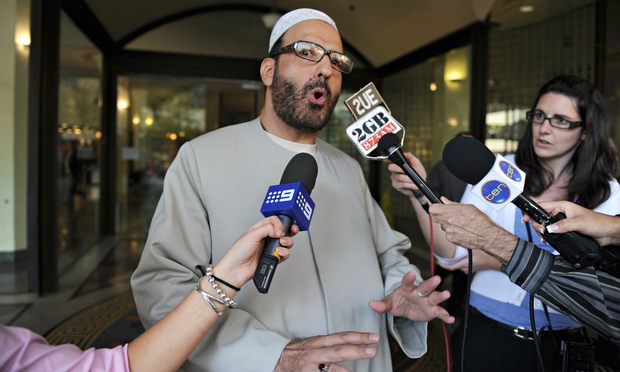The New York Times reports: [Maj. Gen. Michael K. Nagata] has fought in the shadows most of his 32-year Army career, serving in Special Operations forces and classified military units in hot zones such as Somalia, the Balkans and Iraq. Colleagues say he has displayed bureaucratic acumen in counterterrorism jobs at the C.I.A. and the Pentagon, and diplomatic savvy as a senior American military liaison officer in Pakistan during the turbulent period there from 2009 to 2011.
“He’s the rare warrior who is most comfortable in complexity,” said Stanley A. McChrystal, a retired four-star general and former commander of allied forces in Afghanistan.
Complexity is precisely what General Nagata, by then head of American commandos in the Middle East, wanted in July when he asked a tiny think tank within the military’s Joint Staff, known as Strategic Multilayer Assessment, for help in defeating the Islamic State.
In the past year, the group has produced studies on the security implications of megacities around the world and how to apply neuroscience to the concept of deterrence.
When General Nagata first convened the specialists on a conference call on Aug. 20, he described his priorities and the challenges that ISIS posed.
“What makes I.S. so magnetic, inspirational?” he said. He expressed specific concern that the militant organization is “deeply resonant with a specific but large portion of the Islamic population, particularly young men looking for a banner to flock to.”
“There is a magnetic attraction to I.S. that is bringing in resources, talent, weapons, etc., to thicken, harden, embolden I.S. in ways that are very alarming,” General Nagata said.
During the call, General Nagata alluded to the Islamic State’s sophisticated use of social media to project and amplify its propaganda, and insisted the United States needed “people born and raised in the region” to help combat the problem. [Continue reading…]
No doubt Nagata’s think tank doesn’t include Harvard political scientist Stephen Walt, who tweets:
Worrisome: after >decade fighting wars in ME/CAsia, US still doesn't understand its adversaries there. (1) http://t.co/WqO7sSljFr
— Stephen Walt (@stephenWalt) December 29, 2014
Mideast has bad leaders, foreign invasions, deep divisions, etc., yet USGov puzzled why ISIS, can win followers. (2) http://t.co/I8GJtlzt5Q
— Stephen Walt (@stephenWalt) December 29, 2014
I guess “etc” is Walt’s CYA caveat, to underline that these are just tweets — not serious political analysis. But still, they seem to sufficiently encapsulate the conventional wisdom which purports to explain why the growth of ISIS should not be perplexing.
Bad leaders, foreign invasions, and deep divisions are certainly important elements that have helped cultivate the ground for ISIS’s growth, yet these don’t provide sufficient explanations for the fact, for instance, that as many of ISIS’s foreign recruits have come from Tunisia as have come from Saudi Arabia. If being freed from the yoke of an autocratic and corrupt regime was going to take away the fuel for extremism, 3,000-plus Tunisians failed to get the message.
A New York Times report in October offered a glimpse into the minds of a few young Tunisians who felt drawn by ISIS:
In interviews at cafes in and around Ettadhamen [a district in Tunis], dozens of young unemployed or working-class men expressed support for the extremists or saw the appeal of joining their ranks — convinced that it could offer a higher standard of living, a chance to erase arbitrary borders that have divided the Arab world for a century, or perhaps even the fulfillment of Quranic prophecies that Armageddon will begin with a battle in Syria.
“There are lots of signs that the end will be soon, according to the Quran,” said Aymen, 24, who was relaxing with friends at another cafe.
Bilal, an office worker who was at another cafe, applauded the Islamic State as the divine vehicle that would finally undo the Arab borders drawn by Britain and France at the end of World War I. “The division of the countries is European,” said Bilal, 27. “We want to make the region a proper Islamic state, and Syria is where it will start.”
Mourad, 28, who said he held a master’s degree in technology but could find work only in construction, called the Islamic State the only hope for “social justice,” because he said it would absorb the oil-rich Persian Gulf monarchies and redistribute their wealth. “It is the only way to give the people back their true rights, by giving the natural resources back to the people,” he said. “It is an obligation for every Muslim.”
Many insisted that friends who had joined the Islamic State had sent back reports over the Internet of their homes, salaries and even wives. “They live better than us!” said Walid, 24.
Wissam, 22, said a friend who left four months ago had told him that he was “leading a truly nice, comfortable life” under the Islamic State.
“I said: ‘Are there some pretty girls? Maybe I will go there and settle down,’ ” he recalled.
Depending on who they follow on Twitter, young men such as these in Tunisia and elsewhere may now have a less rosy view of life in the new caliphate — reports of deserters being executed en masse, of hundreds of fighters getting slaughtered in Kobane, and of ISIS’s inability to perform the most basic requirements of government in Mosul, should make the group look less appealing. They certainly don’t offer images of a better life.
But ISIS has successfully created an information space within which cult-like groupthink prevails. Young men intoxicated by a dream can easily dismiss bad reports as apostate propaganda. And the effort to promote a counter-narrative is destined to fail if it is seen as an imposition from outside — least of all is there any serious prospect that the State Department will have much success in persuading would-be fighters to think again and turn away.
The only challenge that is going to have any real weight is one that is not only indisputably religiously authentic, but also one that resonates with the social and generational demographic around which ISIS now has its grip.



 “We’ve looked at all possibilities, but in the end we are really certain that this must have been made by an agent who did a very deliberate action with a very sharp implement,” says Joordens. Her team tried replicating the pattern on fresh and fossilized shells, “and that made us realize how difficult it really was”, she says.
“We’ve looked at all possibilities, but in the end we are really certain that this must have been made by an agent who did a very deliberate action with a very sharp implement,” says Joordens. Her team tried replicating the pattern on fresh and fossilized shells, “and that made us realize how difficult it really was”, she says.
